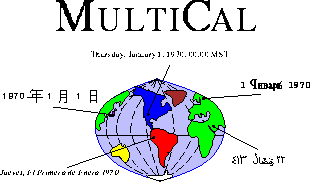|
|
|
Publications
-
James Clifford,
Curtis E. Dyreson,
Tomas Isakowitz, Christian S. Jensen, and Richard T. Snodgrass.
"On the Semantics of Now in Databases."
ACM Transactions on Database Systems
22(2), 1997, pp. 215--254.
Abstract
|
PDF from ACM TODS
|
DBLP Electronic Edition
-
James Clifford,
Curtis E. Dyreson,
Richard T. Snodgrass, Tomas Isakowitz and Christian S. Jensen.
Now.
In The TSQL2 Temporal Query Language.
Richard T. Snodgrass, editor.
Kluwer Academic Press, 1995. pp. 383-392.
DBLP Electronic Edition
Abstract
While `now' is expressed in SQL as CURRENT_TIMESTAMP
within queries,
this value cannot be stored in the database.
However, this notion of an ever-increasing current-time value has been
reflected in some temporal data models by inclusion of database-resident
variables, such as `now,' `until-changed,'
`infinity,' `@' and `--.' Time variables are
very desirable, but their use also leads to a new type of database,
consisting of tuples with variables, termed a variable database.
This paper proposes a framework for defining the semantics of the
variable databases of the relational and temporal relational data models. A
framework is
presented because several reasonable meanings may be given to
databases that use some of the specific temporal variables that have
appeared in the literature. Using the framework, the paper defines a
useful semantics for such databases. Because situations occur where
the existing time variables are inadequate, two new types of modeling
entities that address these shortcomings, timestamps which we call
now-relative and now-relative indeterminate, are
introduced and defined within the framework. Moreover, the paper
provides a foundation, using algebraic bind operators, for the
querying of variable databases via existing query languages. This
transition to variable databases presented here requires minimal
change to the query processor. Finally, to underline the practical
feasibility of variable databases, we show that
database variables can be
precisely specified and efficiently implemented in conventional query
languages, such as SQL, and in temporal query languages, such as
TSQL2.
Curtis E. Dyreson
© 1993-2001. All rights reserved.
|
